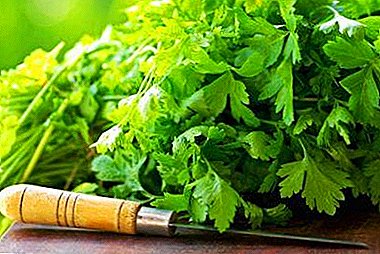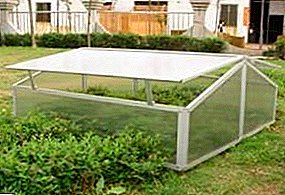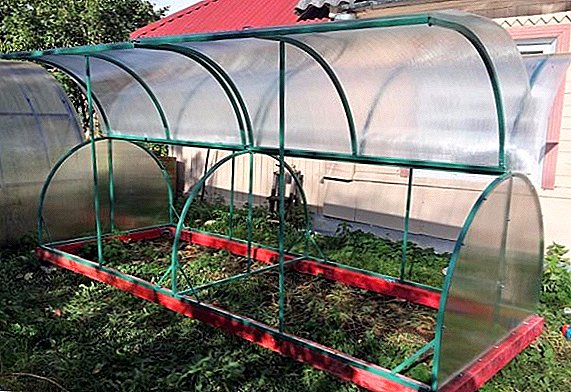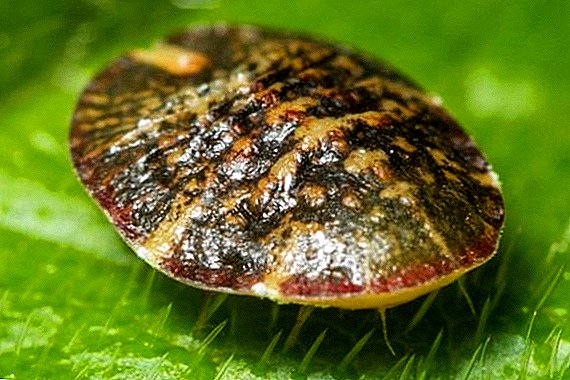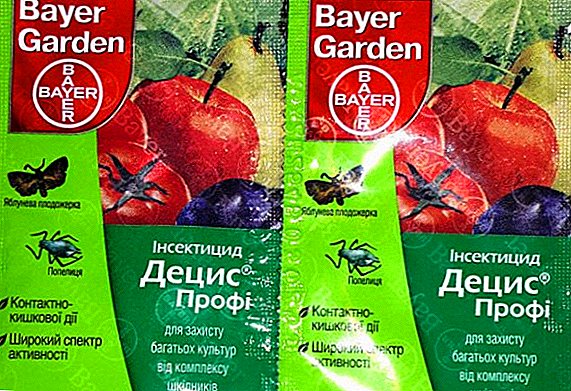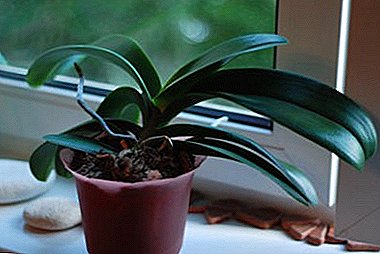
Many novice orchid growers almost every day are faced with various questions about the care of their pets.
Most of the problems are related to the fact that their orchids do not want to bloom, or bloom rarely, or not as magnificently as we would like.
It is not without reason that the glory of capriciousness firmly entrenched behind this flower. This article is an attempt to sort out matters of this kind in order to make it clear for sure how to make an orchid release a flower stalk.
What is flowering shoot?
Peduncle is very similar to orchid root, therefore, often inexperienced growers make irreparable mistakes in plant care that can lead to fading or death of the peduncle. What are the main differences between peduncle and root?
- The shape of the spine is round, and the peduncle is cone-shaped.
- Flowering shoot appears only from the leaf bosom.
- The arrow appears above the place of the previous flowering.
- Be sure to have irregularities on the peduncle - buds.
Most often, the orchid produces flower stalks in the autumn, when temperature drops between day and night indicators are large: from + 25С to + 15С. The average period of formation of the arrow of the flower - 2 - 3 months (from the moment of appearance to the phase of the formed peduncle). If the florist creates comfortable conditions for the plant, then this process can be accelerated. At the same time, this will guarantee that the home beauty will surely bloom.
How important is flowering?
 Peduncle - the most important part of the orchid. Some florists call it the "heart" of the plant. It is he who provides all the beauty of the orchid, as flowers are formed on it. As is known from the lessons of biology, the flower is the means by which the plant attracts insects for its pollination, that is, for the continuation of the species. As a confirmation of this, it is on the peduncles that babies appear, which then can be easily rooted and already get a new plant.
Peduncle - the most important part of the orchid. Some florists call it the "heart" of the plant. It is he who provides all the beauty of the orchid, as flowers are formed on it. As is known from the lessons of biology, the flower is the means by which the plant attracts insects for its pollination, that is, for the continuation of the species. As a confirmation of this, it is on the peduncles that babies appear, which then can be easily rooted and already get a new plant.
While the orchid peduncle is growing, the plant should not be transplanted!
Why the plant does not release the shooter?
Important. The reasons that cause problems with the peduncle, depend on what kind of orchids in question. Without knowing the peculiarities of care for a particular orchid variety, one cannot hope for its systematic, abundant bloom!
All orchids are divided into simpoid and monopoidal. The latter have only one growth point, the bush does not divide, it does not have a period of rest: Wanda, phalaenopsis, askocends. The symptomatic ones need a period of rest that should be properly provided. In other words, what is good for phalaenopsis and dendrobium will be irrelevant for vanda, cymbidium, cattley.
Before expecting a peduncle pasture from an orchid, you need to familiarize yourself with the specialized literature devoted to the creation of the necessary conditions for the maintenance of a particular type of flower. And then it is necessary to analyze: why the orchid does not give a peduncle, do the created conditions suit it, and if they are inappropriate, what should be done? If the epiphyte lacks light, the irrigation scheme is not adjusted, the correct temperature conditions are not observed, the plant has been fertilized for a long time, then flowering is out of the question.
Some florists resort to using special preparations, for example, cytokinin paste. It is a phytoharmon, its main purpose is to awaken dormant buds, form shoots in the intended place, accelerate the flowering of the plant. Another drug is succinic acid (4 tablets per 1 liter of water). A pot of orchids is placed in the acid solution with water overnight. In order for an orchid to start sprouting, to do it once is not enough - a similar procedure should be carried out at least once a week.
What if there is no escape or he froze?
 In order to find out why the arrow does not grow, first of all you need to make sure that the plant is healthy. Perhaps the reason lies in any disease. And, of course, it is worth analyzing whether all the conditions for the care of the orchid that produced the flower spike are provided. If not, then it is necessary to do everything possible so that they are respected.
In order to find out why the arrow does not grow, first of all you need to make sure that the plant is healthy. Perhaps the reason lies in any disease. And, of course, it is worth analyzing whether all the conditions for the care of the orchid that produced the flower spike are provided. If not, then it is necessary to do everything possible so that they are respected.
In order for the released arrow to blossom, you must comply with certain requirements:
- Lighting. Orchid loves a lot of diffused light. Light day for the released hand should be at least 12 hours, otherwise it is fraught with a fading peduncle. The best place - southeast or southwest windows.
- Temperature. Orchid is a tropical plant that loves warmth. It feels comfortable at + 25C, but the night temperature should be much lower: the difference between day and night temperatures should be about 5 C.
- Watering. The general rule for watering all orchids remains in force: as the soil dries.
- Humidity. We should not forget about the systematic spraying of plants with warm settled water, while not forgetting about watering. However, a direct impact on the plant can also be disastrous, so experienced flower growers are advised to “wrap” the orchid with water dust: put the epiphyte in the center of groups of other plants and spray them.
- Top dressing. Important elements for a flower in the period of pasture arrows are phosphorus and potassium. It is better to feed the plant with special fertilizers for orchids bought in the store (for example, Agricola) 1–2 times a month before the period of active flowering.
What if there are no buds?
Many orchid lovers complain that their beauties "sit" in place, not pleasing with their flowering for several years. What should be done in such a situation for the plant to shoot an arrow? To begin with - just try to rearrange the flower to a new place. If it does not help, then there are several options for "shock therapy" that are highly recommended by experienced florists.
Temperature drops
- Move the flower with the pot to a place where there is a temperature difference of 5 ° C to 7 ° C: it should be cool at night and warm during the day. The best place is a balcony, a veranda.
- Be sure to check if there are any drafts, as the plant does not tolerate them and may die.
Shading and moisture reduction
- To rearrange the container with the epiphyte in a more darkened place than the one to which he was accustomed.
- As much as possible to reduce and sometimes completely stop watering the plant, arranging for it a kind of "drought."
- After 1.5 -2.5 weeks to carry out the first moderate watering.
Reduced watering frequency
 To reduce orchid watering twice: for example, if watering was carried out 1 time in 5 days, then you need to start watering the plant 1 time in 10 days.
To reduce orchid watering twice: for example, if watering was carried out 1 time in 5 days, then you need to start watering the plant 1 time in 10 days.- Between the intervals of "drought" is recommended moderate watering with boiled water at room temperature.
- It is impossible at this time to spray the plant, moisten the substrate with a spray.
It is unacceptable to use several techniques at the same time, as this can lead to the death of a flower!
Getting a few stems at home
The number of peduncles on the orchid directly depends on the genetic characteristics the kind that was purchased. An important role is played by such factors as the age of the plant, the power of its root system, the quantity and quality of lighting, the regularity of watering, and the observance of the optimum temperature regime.
Subject to all the requirements for the care and maintenance of orchids, you can try to increase the number of flower stalks as follows:
- After flowering, cut off the old flower stalks (making sure they dried out completely).
- Treat the leaves and substrate with the fungicide.
- Feed the plant with specialized fertilizer for orchids.
Once the orchid peduncle dries to its very foundation, it should be cut off. This will require sharp scissors or shears, activated carbon. A sharp clean tool cuts off the dried peduncle, not reaching two centimeters to the surface of the substrate. The cut is processed with crushed activated carbon.
How to direct the arrows grow up?
 Wait until the arrow reaches a length of 15 - 20 cm. While it is green, it is very flexible and can easily change its direction of growth.
Wait until the arrow reaches a length of 15 - 20 cm. While it is green, it is very flexible and can easily change its direction of growth.- Raised shoot must be fixed in a vertical position with the help of a support in a pot and special clothespins (elastic bands, hairpins, etc.).
- If there is a risk of injury to the peduncle or even its breaking, then fixation can be carried out gradually. In order to maximally approach the peduncle to a support, it is tied with a rubber band, rope, tape or bandage to the holder, gradually reducing the distance between them over time.
We offer to watch a video on how to properly fasten the flower spike so that it starts to grow up:
Problem prevention
It should be noted that in the natural environment - the tropics - orchids grow on trees, from which their flower stalks hang down under the weight of buds and flowers. Therefore, the growth of the arrows is not vertically up, but horizontally - a natural process for a given plant, laid down by nature. The only way to prevent the situation in the home is to constantly turn the orchid pot as the peduncle is deflected to the side. He will reach for the light, thereby aligning himself.
As for the problems of “fading” growth of the flower stalk or even the unwillingness of an orchid to bloom, then there is only one recommendation: to strictly observe the requirements for the maintenance and care of an orchid of a certain type.
Orchid care is a laborious process. Difficulties can occur at every step. Only perseverance, dedication, attentiveness of the grower will help him in achieving the main goal in growing an orchid - admiring for a long time the beauty of the flower.


 To reduce orchid watering twice: for example, if watering was carried out 1 time in 5 days, then you need to start watering the plant 1 time in 10 days.
To reduce orchid watering twice: for example, if watering was carried out 1 time in 5 days, then you need to start watering the plant 1 time in 10 days. Wait until the arrow reaches a length of 15 - 20 cm. While it is green, it is very flexible and can easily change its direction of growth.
Wait until the arrow reaches a length of 15 - 20 cm. While it is green, it is very flexible and can easily change its direction of growth.